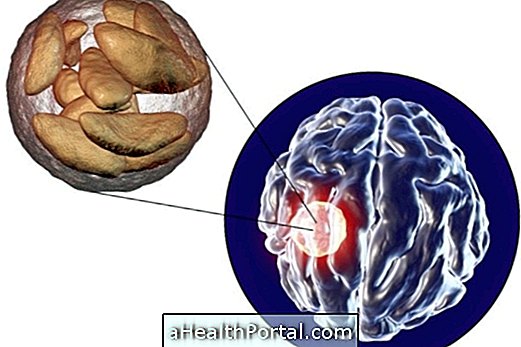Brain death is the inability of the brain to maintain vital functions of the body, such as the patient breathing alone, for example. A patient is diagnosed with brain death when he presents symptoms as total absence of reflexes, being kept "alive" only with the help of apparatuses, and it is at that moment that one can do the organ donation, if it is possible.
In addition to promoting organ transplantation, in case of brain death, relatives can say goodbye to the patient, which can bring some comfort. However, children, the elderly and people with heart problems or who can not be moved should not contact this patient.

What can cause brain death
Brain death can be caused by numerous causes, such as:
- Head trauma;
- Lack of oxygen in the brain;
- Cardiorespiratory arrest;
- Stroke (Stroke);
- Swelling in the brain,
- Increased intra-cranial pressure;
- Tumors;
- Overdose;
- Lack of glucose in the blood.
These and other causes lead to increased brain size (cerebral edema), which associated with the impossibility of expansion due to the skull, leads to compression, decreased brain activity and irreversible damage to the central nervous system.
How to know if it is brain death
Signs that indicate that this is a brain death and that the person will not recover are:
- Absence of breath;
- Absence of pain from stimuli such as pricking a needle in the body or even inside the patient's eyes;
- Non-reactive pupils
- There should be no hypothermia and hypotension should show no signs.
However, if the person is attached to the apparatus, they can keep their breathing and their heartbeat, but the pupils will not be reactive and this will be a sign of brain death. The diagnosis should be made by two different doctors, on two different days, by observing the symptoms mentioned above so there is no room for error.
How long does brain death last?
The brain-dead patient can be kept alive while the devices are on. By the time the appliances are turned off, the patient is truly said to be dead, and in this case, turning off the appliances is not considered euthanasia, as the patient has no chance of surviving.
The patient can be kept "alive" through the devices for as long as the family wishes. Although it is only desired that the patient be kept in this state for some time if he is an organ donor, to ensure the removal of the organs for subsequent transplantation in another patient. Learn how heart transplants are done, for example.

























